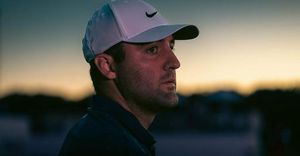The story of Scott Lawson is one woven through twists of fate, ambition, and the gritty realities of federal law enforcement. It all began with his childhood dreams—dreams shaped by the footsteps of his father, who served as a deputy sheriff. Lawson grew up idolizing the badge, forever wishing to follow his father's path. Fast forward to today, and Lawson is not just any FBI Special Agent; he is part of the legendary takedown of the notorious Los Zetas cartel. This dramatic saga began to unravel back in 2012 when the FBI executed a bold raid on José Treviño's residence.
That raid was not just any ordinary operation; it was the culmination of years of painstaking investigation, aimed squarely at tackling the menace of the infamous Los Zetas cartel, known for its ruthless methods and sprawling criminal enterprises. Treviño, initially known as just another name on the FBI's radar, turned out to be deeply entrenched with money laundering operations tied to horse racing. The operation was spearheaded by none other than Scott Lawson, whose career took flight as he locked horns with one of the most dangerous crime families operating across the United States and Mexico.
When Lawson graduated from the FBI Academy at Quantico, Virginia, he was rumbling with ambition yet sidelined by the challenges of being stationed at Laredo, Texas. Described as unfamiliar territory for the rookie agent—due not only to its geographical isolation but also due to his limited knowledge of Spanish—he didn't let these barriers hold him back. One fateful tip led him to José Treviño, who transitioned from being just another immigrant bricklayer to one of the key figures entwined with Los Zetas criminal activities. Lawson's unique approach and instincts kicked off what would become one of the trigger points for unraveling vast networks of organized crime.
Starting his investigative efforts back in 2009, Lawson relied on every tool at his disposal. His work was not just solitary; it became intertwined with input from various informants and support from colleagues like attorney Doug Gardner and task force leader Steve Pennington. This collaboration burgeoned over several years, targeting the Treviño family’s criminal operations as they disguised drug profits through legitimate-seeming avenues like horse racing.
What Lawson and his team discovered was eye-opening: drug money was flowing through unsuspecting systems, and they had managed to calculate not just the risks involved but also the near-insurmountable network set up by Los Zetas. Three years of diligent digging came to fruition when, during the 2012 raid, the authorities arrested Treviño, who was caught red-handed with the evidence they painstakingly pieced together. The repercussions of this bust were felt across the board, as multiple accomplices were also charged with conspiracy to launder money.
By 2013, Lawson’s success became part of narratives spun through multiple headlines; his investigation had contributed substantially to the downfall of key figures within the cartel. Treviño himself faced the possibility of spending up to two decades behind bars, marking this operation as not just another victory for the FBI, but also as one full of personal stakes, especially for Lawson, who had faced immeasurable challenges along the way.
2012 proved to be pivotal across various fronts. The media spotlight shone heavily on Lawson's tactical brilliance, with his story featured prominently across platforms, including Melissa del Bosque’s gripping true-crime novel titled Bloodlines: The True Story of a Drug Cartel, the FBI, and the Battle for a Horse-Racing Dynasty. This portrayal brought Lawson's life even closer to movie adaptation discussions, reportedly with notable Hollywood figures like Channing Tatum showing interest. Discussions revolved around turning his life story from the shadows of law enforcement to the shimmering lights of the big screen.
Today, Scott Lawson continues his career as an FBI agent, though he has pulled away from the public eye significantly. Living quietly in Fort Wayne, Indiana, Lawson has minimized his social media footprint and even his public engagements. He often prefers to keep his personal life succinct and private as well, revealed only through bits and pieces shared via community outreach platforms. Notably, he returned to his roots, reconnecting with his educational background at Jackson Exchange, where he engaged the community by speaking about the FBI’s Child Abduction Rapid Development team—a reflection of his own narrative of growth and determination.
His association with Los Zetas may have opened many doors, but it also came with its burden, especially after suffering the loss of his father during the Treviño investigation. While many know him as the sharp-witted agent behind the curtain chasing criminals, it is Lawson’s personal losses and life experiences, both positive and dark, which underscore his resilience. His career now reflects not only his commitment to justice but highlights the complex interplay between personal life and professional duty.
While the possibility of cinematic portrayals captivates audiences, Lawson remains grounded, reminding everyone involved, including aspiring law enforcement officers, of the real stakes behind the headlines—real lives, challenges, and the sometimes-bitter consequences borne out of ambitious pursuits.
Lawson’s story is part of the tumultuous wider narrative about the Los Zetas cartel, which has shaped both U.S. and Mexican law enforcement efforts over the past decades. Undoubtedly, the FBI's efforts to disrupt this cartel showed glimpses of how deeply intertwined drug trafficking and financial crimes are with traditional America, pushing the conversation on law enforcement responsibilities, challenges, and the extent of cartel reach. Lessons learned during the ride not only inspire honor but reaffirm the constant need for vigilance against organized crime, adapting and evolving to meet new threats as they arise.
The battle against drug trafficking continues, with law enforcement agencies employing advanced technologies and intelligence-sharing strategies to remain one step ahead. This endeavor draws heavily from the successes and failures of past operations, including Lawson’s. He may have moved past the media limelight, but the ramifications of this fierce confrontation with Los Zetas play on. The agent’s relentless pursuit of justice encapsulates the eternal struggle between law and disorder and serves as motivation for countless others against adversaries who will not easily step down.
Even as society reflects on these gripping stories, the dramatic interplay between the forces of good and evil continues to inform how communities can come together to tackle systemic issues surrounding drug trafficking and the violence often stemming from it. The saga of Scott Lawson is just one piece of this larger puzzle, yet it showcases the unwavering resolve of those like him who craft their destinies through courage, strategy, and unwavering moral conviction.



